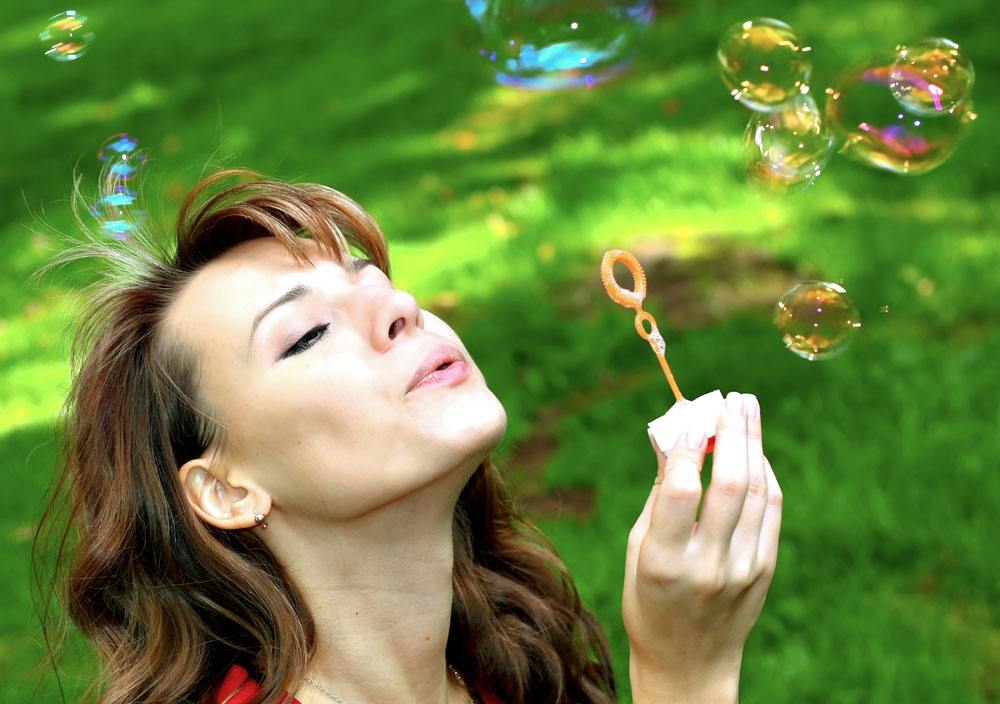The addition of soap helps because these molecules have two distinct ends, one that is attracted to water, and one that is not.
將肥皂加入水中有利于產生泡泡,因為肥皂分子擁有親水和疏水兩端。
When a wand is dipped into soapy water, soap molecules cover the surface of the film, with their water-loving ends facing the water.
“魔術棒”蘸取肥皂水后,肥皂分子會覆蓋在薄膜表面,其分子的親水端則面向水。

Since the water molecules are now attracted not only to each other but also to one end of the soap molecules,
由于這時水分子不僅會互相吸引,而且還被肥皂分子的親水端吸引,
the water is held in place as it stretches across the wand, forming a soapy film.
在“魔術棒”上被拉伸時,水分子也能固定并形成肥皂薄膜。
Blowing into the film is similar to blowing into a balloon: the rush of air makes the film stretch and expand.
吹薄膜與吹氣球類似:氣流涌進導致薄膜伸展和膨脹。
Surface tension makes the soap water molecules still attached to the wand automatically come together, closing the developing bubble’s open end.
表面張力使得附著在“魔術棒”上面的肥皂水分子自動地聚集在一起,導致不斷膨脹的氣泡開口處閉合。
Once this happens, sealing the air inside its skin, the completed bubble releases and floats away.
開口閉合后,氣體被密封在肥皂薄膜內部,然后泡泡脫離后漂浮。












